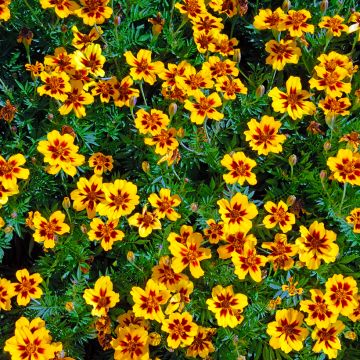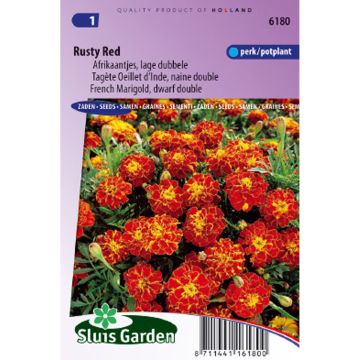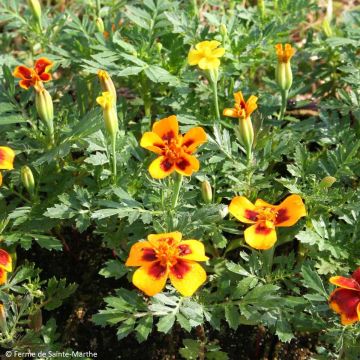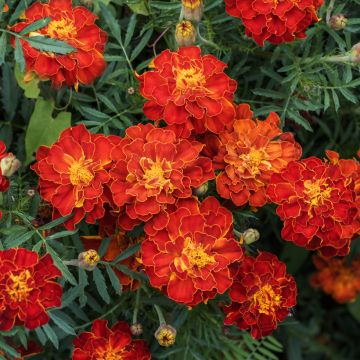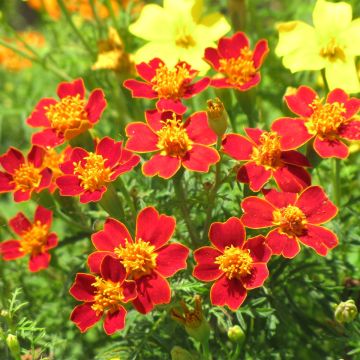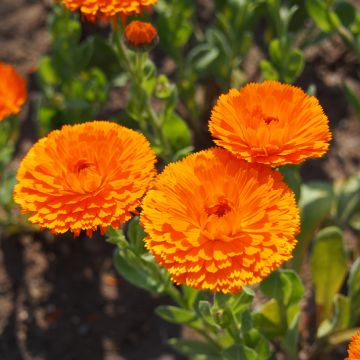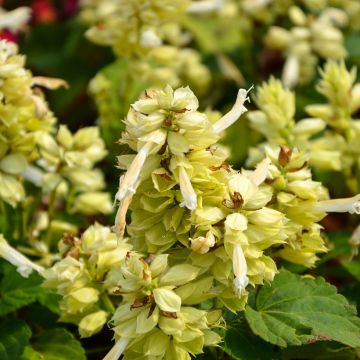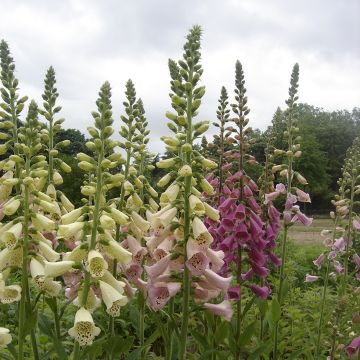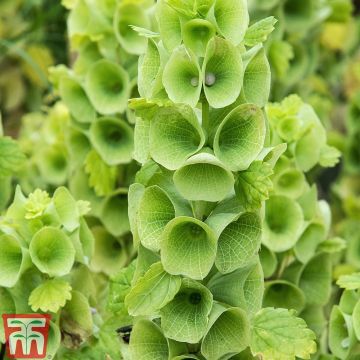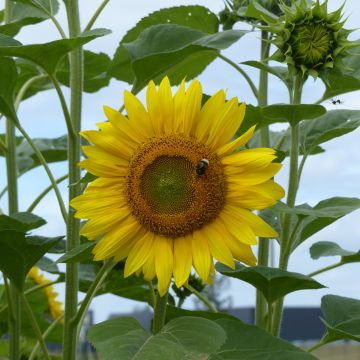

Red Knight Marigold Seeds - Tagetes patula


Red Knight Marigold Seeds - Tagetes patula


Red Knight Marigold Seeds - Tagetes patula
Red Knight Marigold Seeds - Tagetes patula
Tagetes patula Red Knight
French marigold
This item cannot be shipped to the selected country
Dispatch by letter from €3.90
More information
Schedule delivery date,
and select date in basket
This plant carries a 6 months recovery warranty
More information
We guarantee the quality of our plants for a full growing cycle, and will replace at our expense any plant that fails to recover under normal climatic and planting conditions.
Seed-only orders are dispatched by sealed envelope. The delivery charge for seed-only orders is €3.90.
Does this plant fit my garden?
Set up your Plantfit profile →
Description
The 'Red Knight' Marigold or Tagetes patula 'Red Knight' is a variety of very high quality: it forms a vigorous but compact and bushy clump, reaching a height of 20 cm (8in), topped with single bicoloured flowers. From late spring to autumn, this plant offers flowers with mahogany petals edged in yellow, surrounding a yellow central disk, creating a beautiful contrasting bicoloured duo. Cultivated as an annual, it is easy to sow and grow in well-drained soil in full sun.
Tagetes patula is an herbaceous annual plant from the Asteraceae family, native to tropical regions of the Americas, from Mexico to Bolivia. The 'Red Knight' selection quickly forms a small spreading bushy clump, measuring approximately 25 to 30 cm (10 to 12in) in all directions. Its dark green, highly dissected aromatic foliage emits an odor that can sometimes be unpleasant. Its flowering extends from June to October, provided that faded flowers are regularly removed. This 'Red Knight' variety offers magnificent simple heads, with ligulate (outermost petals of the head) of deep mahogany red, bordered by a fine yellow edge. The central disk is yellow. These plants readily self-sow in the garden, although they do not always faithfully reproduce the parent variety.
Marigolds are very popular plants in summer beds, bringing cheerfulness, being easy to grow, and producing abundant flowering. They are perfect in borders and containers. To temper their flamboyant temperament, they can be paired with grey foliage, such as that of artemisias and stachys, or with small ornamental grasses. The scent of marigold foliage and the substances secreted by their roots repel certain pests harmful to crops, which is why these plants are often placed among the vegetables in the kitchen garden. For a blooming vegetable garden, plant Tagetes with Dahlias, Agastaches, and Nasturtiums.
Report an error about the product description
Red Knight Marigold Seeds - Tagetes patula in pictures


Flowering
Foliage
Plant habit
Botanical data
Tagetes
patula
Red Knight
Asteraceae
French marigold
Tagetes lunulata
Cultivar or hybrid
Other Tagetes seeds
Planting and care
Sowing:
Sow from February to April.
Sow on the surface of a special sowing compost, moist and well-draining. Cover the seeds with a very thin layer of vermiculite or compost. Place the seedlings in a mini greenhouse or enclose them in a polyethylene bag at a constant temperature of 20 to 25° (68 to 77°F) until germination, which usually takes 7 to 21 days. Do not deprive them of light, as this promotes germination.
When the young plants are sufficiently developed to be handled, transplant them into a terrine or 8 cm (3in) pots. Acclimate them to cooler conditions for 10 to 15 days before watering and planting them outside, with a planting distance of 15 - 20 cm (6 - 8in), as soon as the risk of frost has passed.
Cultivation:
These fast-growing plants thrive in sunny and warm conditions. Plant them in fertile, well-drained, light soil. Avoid excessive watering in summer, as this promotes the development of fungal diseases and root rot. Regularly remove faded flowers to prolong the flowering period. Protect the plants from slugs and snails, which are fond of them.
Sowing period
Intended location
This item has not been reviewed yet - be the first to leave a review about it.
Flower seeds
Haven't found what you were looking for?
Hardiness is the lowest winter temperature a plant can endure without suffering serious damage or even dying. However, hardiness is affected by location (a sheltered area, such as a patio), protection (winter cover) and soil type (hardiness is improved by well-drained soil).

Photo Sharing Terms & Conditions
In order to encourage gardeners to interact and share their experiences, Promesse de fleurs offers various media enabling content to be uploaded onto its Site - in particular via the ‘Photo sharing’ module.
The User agrees to refrain from:
- Posting any content that is illegal, prejudicial, insulting, racist, inciteful to hatred, revisionist, contrary to public decency, that infringes on privacy or on the privacy rights of third parties, in particular the publicity rights of persons and goods, intellectual property rights, or the right to privacy.
- Submitting content on behalf of a third party;
- Impersonate the identity of a third party and/or publish any personal information about a third party;
In general, the User undertakes to refrain from any unethical behaviour.
All Content (in particular text, comments, files, images, photos, videos, creative works, etc.), which may be subject to property or intellectual property rights, image or other private rights, shall remain the property of the User, subject to the limited rights granted by the terms of the licence granted by Promesse de fleurs as stated below. Users are at liberty to publish or not to publish such Content on the Site, notably via the ‘Photo Sharing’ facility, and accept that this Content shall be made public and freely accessible, notably on the Internet.
Users further acknowledge, undertake to have ,and guarantee that they hold all necessary rights and permissions to publish such material on the Site, in particular with regard to the legislation in force pertaining to any privacy, property, intellectual property, image, or contractual rights, or rights of any other nature. By publishing such Content on the Site, Users acknowledge accepting full liability as publishers of the Content within the meaning of the law, and grant Promesse de fleurs, free of charge, an inclusive, worldwide licence for the said Content for the entire duration of its publication, including all reproduction, representation, up/downloading, displaying, performing, transmission, and storage rights.
Users also grant permission for their name to be linked to the Content and accept that this link may not always be made available.
By engaging in posting material, Users consent to their Content becoming automatically accessible on the Internet, in particular on other sites and/or blogs and/or web pages of the Promesse de fleurs site, including in particular social pages and the Promesse de fleurs catalogue.
Users may secure the removal of entrusted content free of charge by issuing a simple request via our contact form.
The flowering period indicated on our website applies to countries and regions located in USDA zone 8 (France, the United Kingdom, Ireland, the Netherlands, etc.)
It will vary according to where you live:
- In zones 9 to 10 (Italy, Spain, Greece, etc.), flowering will occur about 2 to 4 weeks earlier.
- In zones 6 to 7 (Germany, Poland, Slovenia, and lower mountainous regions), flowering will be delayed by 2 to 3 weeks.
- In zone 5 (Central Europe, Scandinavia), blooming will be delayed by 3 to 5 weeks.
In temperate climates, pruning of spring-flowering shrubs (forsythia, spireas, etc.) should be done just after flowering.
Pruning of summer-flowering shrubs (Indian Lilac, Perovskia, etc.) can be done in winter or spring.
In cold regions as well as with frost-sensitive plants, avoid pruning too early when severe frosts may still occur.
The planting period indicated on our website applies to countries and regions located in USDA zone 8 (France, United Kingdom, Ireland, Netherlands).
It will vary according to where you live:
- In Mediterranean zones (Marseille, Madrid, Milan, etc.), autumn and winter are the best planting periods.
- In continental zones (Strasbourg, Munich, Vienna, etc.), delay planting by 2 to 3 weeks in spring and bring it forward by 2 to 4 weeks in autumn.
- In mountainous regions (the Alps, Pyrenees, Carpathians, etc.), it is best to plant in late spring (May-June) or late summer (August-September).
The harvesting period indicated on our website applies to countries and regions in USDA zone 8 (France, England, Ireland, the Netherlands).
In colder areas (Scandinavia, Poland, Austria...) fruit and vegetable harvests are likely to be delayed by 3-4 weeks.
In warmer areas (Italy, Spain, Greece, etc.), harvesting will probably take place earlier, depending on weather conditions.
The sowing periods indicated on our website apply to countries and regions within USDA Zone 8 (France, UK, Ireland, Netherlands).
In colder areas (Scandinavia, Poland, Austria...), delay any outdoor sowing by 3-4 weeks, or sow under glass.
In warmer climes (Italy, Spain, Greece, etc.), bring outdoor sowing forward by a few weeks.



































